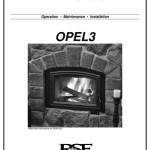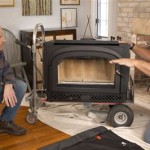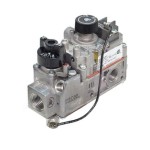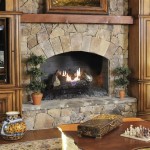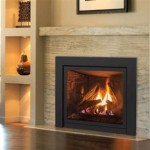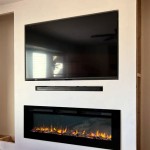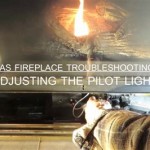Two-Sided Fireplace Designs: Enhancing Ambiance and Functionality
Two-sided fireplaces, also known as see-through or peninsula fireplaces, are architectural features that offer a unique blend of aesthetic appeal and functional advantages. Unlike traditional fireplaces designed to radiate heat and provide visual interest from a single vantage point, two-sided fireplaces are open on opposite sides, effectively connecting two distinct spaces. This design allows for the enjoyment of the fire's warmth and visual charm from multiple areas, making them a popular choice in contemporary home designs. This article explores the various aspects of two-sided fireplaces, including their design considerations, installation nuances, and diverse applications.
The initial consideration for incorporating a two-sided fireplace centers on the desired function and spatial relationship. These fireplaces are often used to visually divide two rooms while maintaining an open and connected feel. For instance, a two-sided fireplace can separate a living room from a dining area, creating distinct zones within a larger open-concept space. The open design facilitates the flow of light and conversation between the rooms, preventing the sense of isolation that can arise with solid walls. Conversely, two-sided fireplaces can also be used to enhance the connection between indoor and outdoor spaces, with one side facing an interior room and the other facing a patio or deck.
The design of a two-sided fireplace must take into account the architectural style of the home and the intended aesthetic. Numerous styles are available, ranging from sleek modern designs with clean lines and minimalist detailing to rustic designs incorporating natural stone and exposed brick. The choice of materials, such as stone, brick, metal, or concrete, significantly impacts the overall look and feel of the fireplace. Additionally, the dimensions of the fireplace need to be carefully considered to ensure that it is appropriately scaled to the surrounding spaces. A fireplace that is too large can overwhelm a smaller room, while one that is too small may not have the desired visual impact. The vent design is also a critical safety consideration, as any backdrafts can transfer smoke and fumes into the space. Typically, this requires a professionally designed system.
Key Point 1: Design and Style Considerations
The aesthetic versatility of two-sided fireplaces makes them adaptable to a wide range of interior design styles. Modern designs often feature linear shapes, stainless steel accents, and glass enclosures. These designs emphasize simplicity and elegance, creating a contemporary focal point. In contrast, rustic designs often incorporate natural materials like river rock, fieldstone, or reclaimed wood. These materials evoke a sense of warmth and authenticity, complementing a more traditional or rustic decor. Transitional designs blend elements of both modern and traditional styles, striking a balance between clean lines and natural textures. The chosen style should harmonize with the overall design scheme of the home, creating a cohesive and visually appealing environment.
Beyond the overall style, specific design elements such as the surround, mantel, and hearth contribute to the fireplace's aesthetic appeal. The surround, which frames the firebox, can be made from a variety of materials, including stone, brick, tile, or metal. The mantel, if included, provides a decorative shelf for displaying artwork or other objects. The hearth, the area in front of the firebox, serves as a protective barrier and can be made from materials that complement the surround. The selection of these elements should be carefully considered to create a harmonious and visually balanced composition.
The integration of lighting is another important design consideration. Recessed lighting can be used to highlight the fireplace surround and mantel, creating a dramatic effect. Accent lighting, such as sconces or spotlights, can be used to draw attention to specific features of the fireplace, such as the texture of the stone or the shape of the firebox. The lighting should be carefully positioned to avoid glare and to enhance the overall ambiance of the space. Incorporating LED lighting can also be a more energy efficient option.
Key Point 2: Installation and Safety Regulations
Due to the complexities of venting and structural requirements, the installation of a two-sided fireplace is best left to professionals. The installation process begins with a thorough assessment of the existing structure and the development of a detailed plan. This plan should include the location of the fireplace, the type of fuel to be used (wood, gas, or electric), and the design of the venting system. Proper installation is crucial for ensuring the safe and efficient operation of the fireplace.
One of the most critical aspects of installation is the venting system. Two-sided fireplaces require a carefully designed venting system to safely remove smoke and combustion gases from the home. The type of venting system will depend on the type of fuel used. Wood-burning fireplaces require a chimney that extends above the roofline, while gas fireplaces can be vented horizontally through a wall. The venting system must comply with local building codes and regulations to ensure that it is properly sized and installed. Additionally, the chimney will need to be cleaned and inspected on a regular basis.
Safety regulations also dictate the clearances required around the fireplace. These clearances specify the minimum distance that combustible materials, such as wood framing or drywall, must be kept away from the firebox and venting system. These clearances are designed to prevent fires and ensure the safety of the occupants. It is essential to consult with a qualified professional to ensure that the fireplace is installed in compliance with all applicable safety regulations. The installation of fire-resistant materials, like cement board, may also be required in order to meet code requirements.
Key Point 3: Fuel Options and Efficiency
Two-sided fireplaces are available in a variety of fuel options, each with its own advantages and disadvantages. Wood-burning fireplaces offer the traditional ambiance and aroma of a real fire, but they also require a significant amount of work to maintain. They produce creosote and smoke, necessitating regular chimney cleaning, and require a readily available supply of firewood. Gas fireplaces offer convenience and ease of use. They can be turned on and off with the flip of a switch and produce very little smoke or ash. However, they require a gas line connection and may not offer the same level of visual appeal as a wood-burning fire.
Electric fireplaces offer a clean and efficient alternative to wood and gas. They do not produce any emissions and can be installed in virtually any location with access to electricity. Electric fireplaces use electric heat to simulate the look of a real fire and can be operated with or without heat, allowing for year-round enjoyment. However, they may not provide the same level of warmth as a wood or gas fireplace, and the visual effect may not be as realistic.
Whatever fuel option is chosen, efficiency is a key consideration. The efficiency of a fireplace is measured by its ability to convert fuel into usable heat. Wood-burning fireplaces are typically the least efficient, with a significant amount of heat being lost up the chimney. Gas and electric fireplaces are generally more efficient, with some models achieving efficiencies of 80 percent or higher. Choosing an energy-efficient fireplace can help reduce heating costs and minimize environmental impact. In particular, gas fireplaces with sealed glass fronts and direct vent systems can be highly efficient.
Maintaining proper airflow is also important for efficiency, regardless of the fuel source. Keeping the area around the fireplace clear allows for better air circulation, which helps to distribute heat throughout the room. Additionally, closing the damper when the fireplace is not in use can prevent heat from escaping up the chimney. Selecting the appropriate size fireplace for the space is also important. An oversized fireplace may produce too much heat, while an undersized fireplace may not provide adequate warmth.
In summary, two-sided fireplaces offer a versatile and visually appealing way to enhance the ambiance and functionality of a home. Careful consideration of design, installation, safety, and fuel options is essential for creating a fireplace that is both beautiful and practical. Professional consultation and installation are highly recommended to ensure the safe and efficient operation of the fireplace.
:strip_icc()/101878383-94197133bc5c4d6ab40663768b12d3af.jpg?strip=all)
Two Sided Fireplaces

23 Luxurious Double Sided Fireplaces Fireplace Photos

Double Sided Fireplace Design Ideas

23 Luxurious Double Sided Fireplaces Fireplace Photos
:strip_icc()/101650552-e405da465bcf430c8a00a965d349be86.jpg?strip=all)
Two Sided Fireplaces
:strip_icc()/101912858-9f96be8af3fc4f5d9c5193113d66184d.jpg?strip=all)
Two Sided Fireplaces

Double Sided Fireplace Design Ideas

13 Examples Of How To Include A Double Sided Fireplace Into Your Home

Living Room Two Sided Fireplace Design Photos And Ideas Dwell

23 Luxurious Double Sided Fireplaces Fireplace Photos

